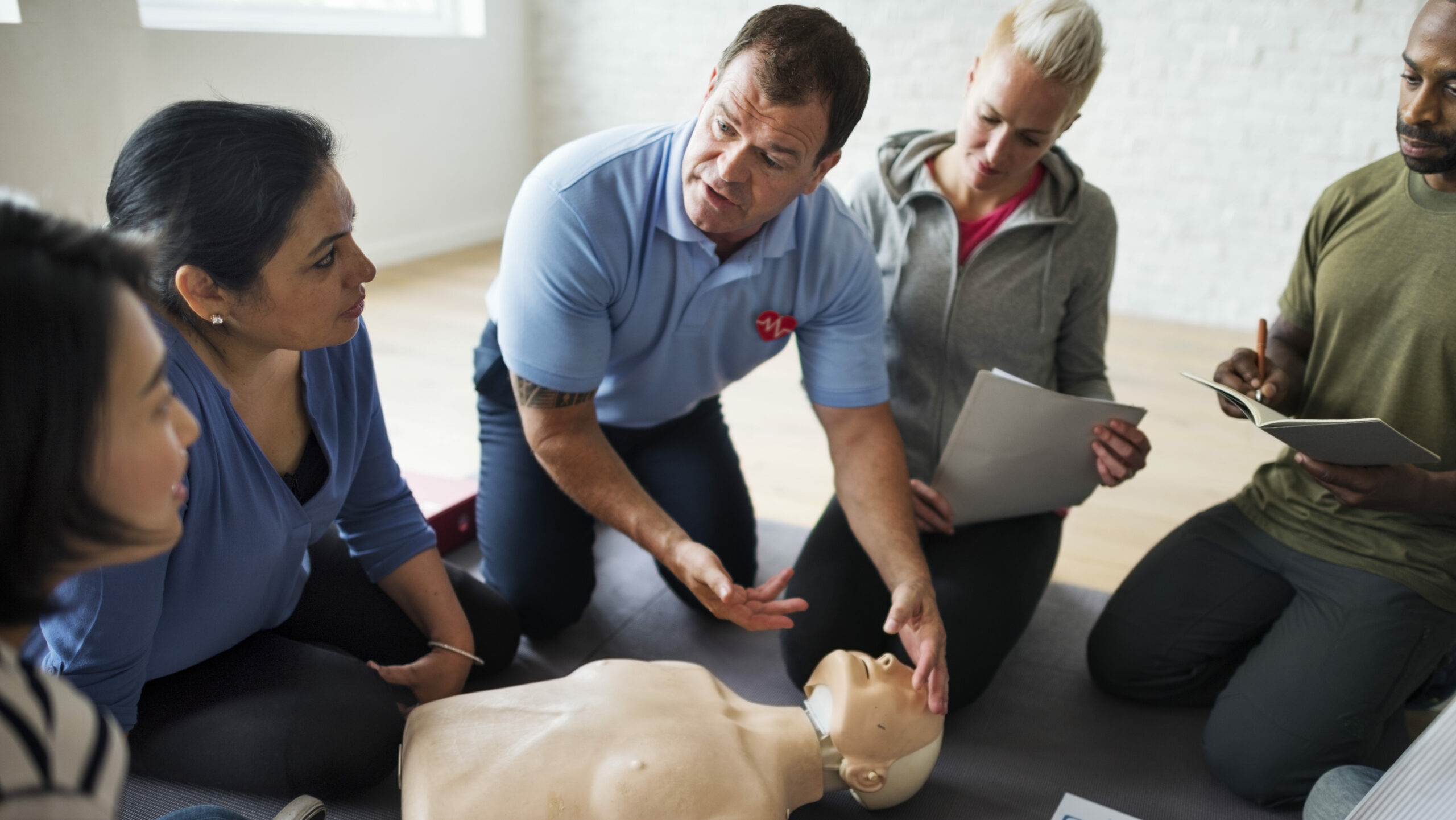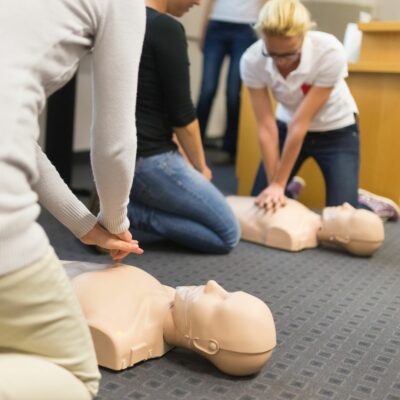Introduction
In today's world, emergencies can strike anytime, and being prepared is vital. Among the crucial skills that can conserve lives is cardiopulmonary resuscitation (CPR). Teenagers represent an essential populace that can be trained to respond properly in emergencies. By outfitting them with CPR training, we not only equip them with life-saving skills yet additionally foster a society of readiness and duty. This post discovers the significance of CPR training for teens, what to expect in first aid training courses, and exactly how these skills add to their personal advancement and area safety.
Understanding mouth-to-mouth resuscitation Educating for Teens: Preparing the Future Generation for Emergencies
What is CPR?
Cardiopulmonary resuscitation (CPR) is a lifesaving technique made use of throughout emergencies when a person's heartbeat or breathing has actually quit. It consists of upper body compressions and rescue breaths that aid preserve blood flow to important body organs up until professional clinical assistance shows up. Comprehending the basics of CPR is important for teens that might discover themselves in emergency situations.
Why Do Teenagers Required Mouth-to-mouth Resuscitation Training?
Teens are typically at celebrations, sports events, and even home parties where emergencies may occur. By learning CPR, they end up being proactive members of their area who can act decisively throughout crises. The capacity to do mouth-to-mouth resuscitation confidently can transform a potentially awful situation into one where lives are saved.
Benefits of First Aid Courses for Teens
First help courses do more than simply show individuals how to offer prompt treatment; they impart self-confidence and enhance analytical skills. For teenagers, this experience can construct personality and encourage leadership qualities.
- Empowerment: Understanding of emergency treatment and mouth-to-mouth resuscitation encourages young people. Confidence Building: Successfully finishing a program supplies teens with a sense of achievement. Community Service: Educated teenagers can volunteer in numerous setups such as colleges or sporting activities teams.
The Framework of CPR Courses for Teens
Course Duration and Format
Most first aid training courses are designed to fit within a few hours to a number of days, relying on the depth of training provided. Usually, a fundamental emergency treatment course will cover:
- Theory: The concepts behind first aid techniques. Practical Abilities: Hands-on experiment mannequins or through simulations.
Key Elements Covered in Emergency Treatment Courses
Understanding Emergency situation Situations- Recognizing when to require help Assessing the scene for safety
- Performing premium chest compressions Providing rescue breaths correctly
- Learning exactly how to run an AED Importance of very early defibrillation
- Techniques for adults, youngsters, and infants Recognizing indicators of air passage obstruction
- Cuts and scrapes Sprains and fractures
The Value of Qualification in First Aid Training
Obtaining Your Emergency treatment Certificate
Completing an emergency treatment course usually culminates in receiving a certification that confirms your abilities. This certification serves multiple purposes:


- It demonstrates competence in emergency situation response. Many organizations need certification for participation in particular events.
Keeping Certifications Current
Just like any type of life ability, it is essential to keep your understanding up-to-date. A lot of companies recommend restoring accreditations every 2 years.
How Teens Can Obtain Involved with Emergency Treatment Training
Finding Regional First Aid Courses
Teenagers curious about acquiring their first aid certificate need to explore regional community centers, institutions, or health and wellness organizations that supply accredited courses.
Helpful Resources:
- American Red Cross St John Ambulance Local hospitals or wellness departments
Online vs In-Person Training Options
With innovations in technology, on the internet components have actually ended up being popular yet might lack hands-on technique important for truly grasping strategies. A mixed Click here for more technique-- integrating online theory with useful sessions-- may be most beneficial.
Creating Understanding Among Peers about Mouth-to-mouth Resuscitation Training for Teenagers: Preparing the Next Generation for Emergencies
Peer Education and learning Initiatives
Encouraging teenagers to share what they have actually found out with their buddies can intensify the influence of training programs:
- Forming study groups focused on emergency situation preparedness. Hosting workshops at schools or area centers.
Using Social network as a Platform
Teens today are greatly involved on social media platforms; using these networks can help spread out awareness regarding the value of first aid training among peers.
Real-Life Stories That Highlight the Relevance of Mouth-to-mouth Resuscitation Educating for Teens
Case Research study 1: Saving a Life at Institution Sports Event
A young adult trained in mouth-to-mouth resuscitation had the ability to save their pal's life during a football suit when he collapsed on the area due to heart attack. Their fast thinking allowed them to provide proper chest compressions up until emergency solutions arrived.
Case Research study 2: Household Emergency at Home
Another instance involved brother or sisters that had actually taken a first aid course together. When their younger brother unintentionally choked on food throughout dinner, they right away recognized what actions to take due to the fact that they remembered their training-- leading them successfully via the emergency.
Frequently Asked Concerns (Frequently Asked Questions) Concerning Teen CPR Training
1. What age should teens start taking CPR courses?
Most organizations advise beginning as early as 12 years old; however, more youthful youngsters can likewise discover fundamental ideas through appropriate programs tailored to their age group.
2. For how long does it take to finish an emergency treatment course?
Training courses generally range from 4 hours up to 16 hours depending upon material depth-- the average being around 8 hours.
3. Exist any requirements before enrolling?
No formal prerequisites exist; nonetheless, it's handy if individuals have an understanding of standard clinical terms.
4. Will I obtain qualification after completing my course?
Yes! Upon successful completion and passing any required assessments you'll obtain an official first aid certificate legitimate for 2 years.
5. Can I take these programs online?
Many organizations use hybrid layouts incorporating online concept with called for useful sessions held in person-- this is suggested by market standards.

6. Is it essential to renew my accreditation periodically?
Yes! Routine recertification ensures your skills continue to be skillful and current according to existing guidelines.
Conclusion
In verdict, outfitting young adults with understanding concerning cardiopulmonary resuscitation (MOUTH-TO-MOUTH RESUSCITATION) via specialized training programs is important not only for their growth but additionally boosts neighborhood safety and security overall. With reliable training resources readily available-- from local courses supplying thorough direction on both basic first aid techniques along with innovative life support techniques-- it's much easier than ever before for young people eager regarding making an impactful distinction throughout emergencies!
As we progress right into an unforeseeable globe loaded with difficulties calling for quick action-- let us invest our initiatives in the direction of informing this next generation so they're prepared not simply academically however likewise almost furnished when faced against real-life scenarios requiring immediate actions like those needing timely treatments such as carrying out efficient cardiopulmonary resuscitation (CPR).